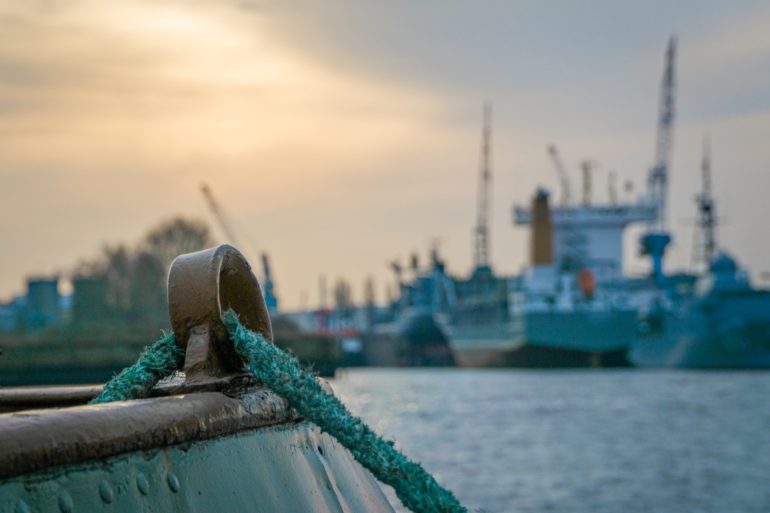Introduction
In a situation where vessels are dangerously approaching each other and the action of one vessel alone may not be enough to avoid a risk of collision (i.e. a close quarters situation), it is rather difficult to assess the respective blameworthiness and causative potency of the vessels involved.
In Owners and/or Demise Charterers of “TS Singapore” v Owners and/or Demise Charterers of “Xin Nan Tai 77” [2018] HKEC 1821, the Hong Kong Court of Appeal was invited to examine the interpretation and application of the International Regulations for Preventing Collisions at Sea 1972 (the “1972 Regulations”) in a crossing situation, and the approach to apportionment of liability when both vessels are at fault, which serve as an important guidance for further cases.
Background
The case concerns two almost simultaneous collisions between three container vessels near the East Lamma Channel Traffic Separation Scheme, Hong Kong on 14 May 2011. Both “MCC Jakarta” and “TS Singapore” were navigating on a south-easterly course outbound from Hong Kong and MCC Jakarta soon decided to overtake TS Singapore.
At that time, “Xin Nan Tai 77” was sailing in a westerly course and soon came to a crossing situation with MCC Jakarta. However, Xin Nan Tai 77 did not alter her course to give way but instead maintained her course and speed. MCC Jakarta, which was busy overtaking TS Singapore at that time, also failed to notice Xin Nan Tai 77 until a close quarters situation was created. MCC Jakarta hastily turned to port in an attempt to avoid collision, but unknown to MCC Jakarta, Xin Nan Tai 77 turned to starboard at the same time. As a result, the port bow of Xin Nan Tai 77 collided with the starboard bow of MCC Jakarta (“1st Collision”). MCC Jakarta did not stop completely but continued to swing to her port side, colliding with TS Singapore a few minutes later (“2nd Collision”).
The trial judge of the Court of First Instance ruled that, for both collisions, Xin Nan Tai 77 and MCC Jakarta were to be apportioned 80% and 20% liability respectively. The owners of Xin Nan Tai 77 appealed the trial judge’s decision to the Court of Appeal.
Court’s ruling
On appeal, in respect of the issue of which vessel created the close quarters situation, the Court of Appeal considered that it was Xin Nan Tai 77 as she took no action to keep out of the way as the give-way vessel and even tried to navigate in between MCC Jakarta and TS Singapore when the two were uncomfortably close.
More importantly, on interpretation of Rule 17(a)(i) of the 1972 Regulations which provides that the stand-on vessel in a crossing situation should keep her course and speed, the Court of Appeal held that to “keep course and speed” does not mean that alterations of course and speed in the ordinary course of navigation are not allowed. Further, when MCC Jakarta took a curving course and increased in speed, her objective was to overtake TS Singapore. Therefore, the Court of Appeal held that MCC Jakarta has not acted in breach of Rule 17(a)(i) of the 1972 Regulations even though she did not keep her course and speed in the strictest sense.
Further, the Court of Appeal held that it was right for MCC Jakarta to bear less liability than Xin Nan Tai 77, even though MCC Jakarta’s port orders were in clear breach of Rule 17(c) of the 1972 Regulations. As suggested by the Nautical Assessor at trial, it was not the master of MCC Jakarta’s fault that he had failed to observe Xin Nan Tai 77’s 10-degree alteration to starboard. Rather, Xin Nan Tai 77’s 10-degree alteration to starboard was “too little too late”.
Conclusion
In view of the above, the Court of Appeal considered it right to follow the approach that “in most cases though not all it will be right to treat the fault of a ship that creates a situation of difficulty or danger as greater than that of the ship that fails to react properly to such situation after it has been created”. Therefore, the Court dismissed the appeal and upheld the apportionment of 80% Xin Nan Tai 77 and 20% MCC Jakarta.
This case provides a useful illustration on the assessment and apportionment of liability between vessels in a crossing and colliding situation. It also serves as an important reminder to those at the helm to follow the 1972 Regulations whenever possible.
Need legal advice?
If you are in need of legal advice, you can get a Quick consult with experienced lawyers in Hong Kong. With Quick Consult, for a transparent, flat fee, the lawyers will call you back on the phone within 1-2 days to answer your questions and give you legal advice.
This article is written by ONC Lawyers and was first published on ONC’s website.
This article does not constitute legal advice or a legal opinion on any matter discussed and, accordingly, it should not be relied upon. It should not be regarded as a comprehensive statement of the law and practice in this area. If you require any advice or information, please speak to practicing lawyer in your jurisdiction. No individual who is a member, partner, shareholder or consultant of, in or to any constituent part of Interstellar Group Pte. Ltd. accepts or assumes responsibility, or has any liability, to any person in respect of this article.

